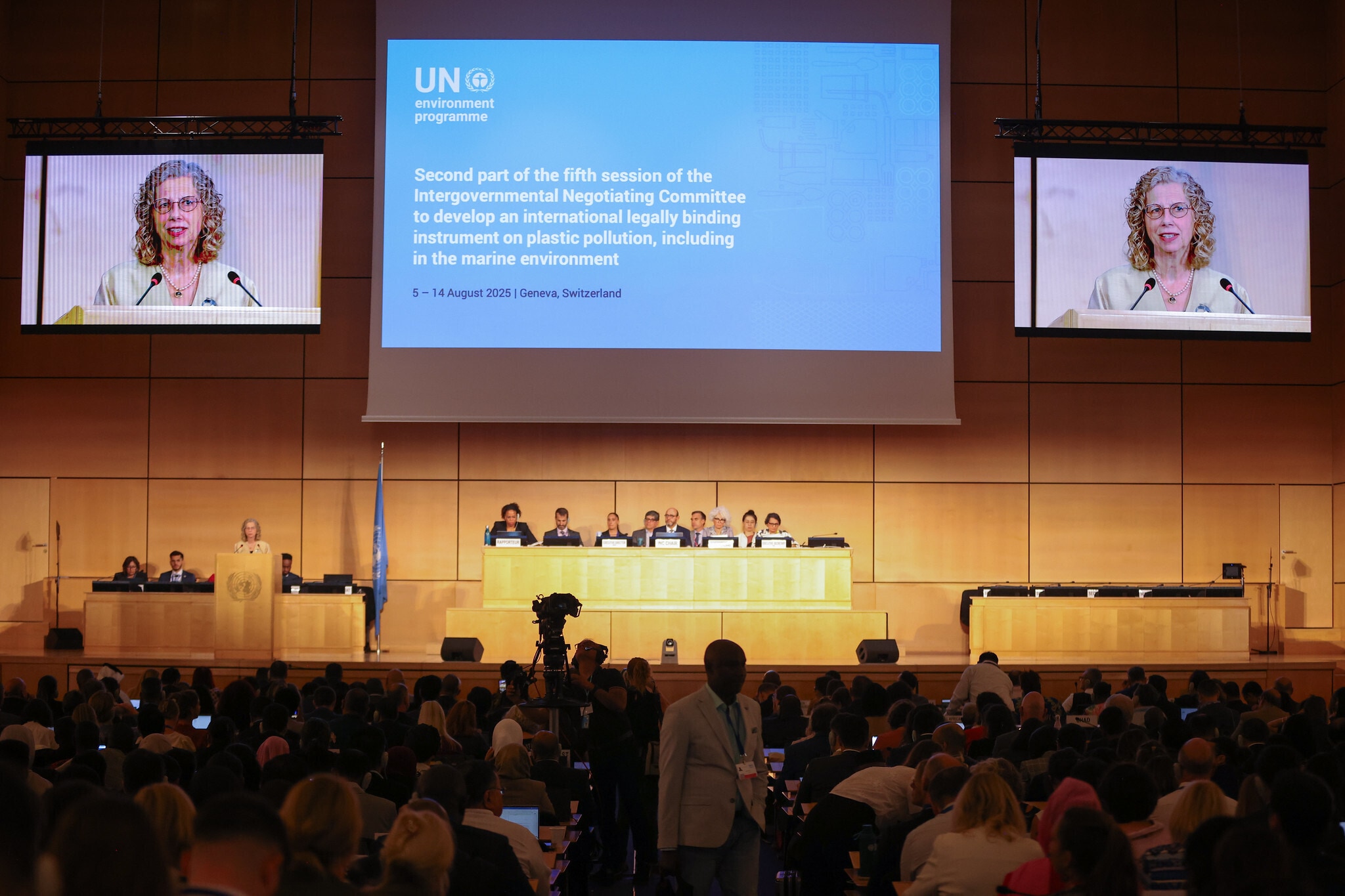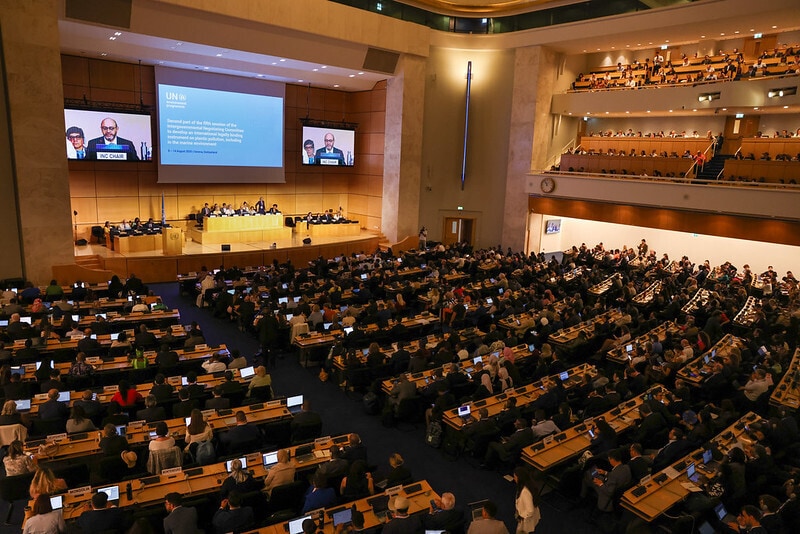World Wildlife Day: How innovative financing instruments are accelerating action on nature
The theme of World Wildlife Day 2025 is: Wildlife Conservation Finance: Investing in People and Planet.
Image: Getty Images/iStockphoto.
Stay up to date:
Biodiversity Finance
This article has been updated.
- 3 March marks World Wildlife Day and the theme this year is 'Wildlife Conservation Finance: Investing in People and Planet'.
- There is an estimated funding gap of $700 billion to reverse biodiversity loss and protect nature, according to a report from the World Economic Forum.
- But innovative nature financing instruments like biodiversity credits are gaining in popularity.
The decline of nature is a huge threat to humanity. More than half of the world’s GDP - an estimated $58 trillion - is moderately or highly dependent on natural ecosystems, according to PwC.
After extreme weather events, biodiversity loss and ecosystem collapse is the biggest risk facing the world in the coming 10 years, the World Economic Forum's community of risk experts found in the Global Risks Report 2025.
Despite increased private sector resources to combat biodiversity loss since the 2022 adoption of the Kunming-Montreal Global Biodiversity Framework (GBF), there remains a $700 billion annual financing gap for nature, according to a report from the Forum and McKinsey. The GBF calls for at least $200 billion annually for biodiversity and the elimination of harmful subsidies by 2030.
This World Wildlife Day (3 March), the United Nations (UN) is highlighting the urgent need for innovative finance for wildlife conservation, with the theme 'Wildlife Conservation Finance: Investing in People and Planet'.
Interest in developing innovative financial approaches, such as debt-for-nature swaps and wildlife conservation bonds, and payments for ecosystem services (PES) schemes.
But current financial flows are still insufficient for governments to meet national biodiversity targets, the UN says.
Accept our marketing cookies to access this content.
These cookies are currently disabled in your browser.
Progress so far
According to the WWF’s National Biodiversity Strategy and Action Plans tracker, released in advance of the COP16 summit, more can be done. In September, only 10% of countries had submitted their updated plans and another 33% had only updated their national targets.
Efforts have been slowed by a number of barriers including a lack of funding, insufficient data and political instability. However, policies and regulations are slowly being deployed at a local level to encourage investments in the protection and restoration of nature.
These include: the Australian Nature Repair Market, which aims to set up the rules for voluntary biodiversity credits markets; the UK’s Biodiversity Net-Gain policy, a first-of-its-kind regulation requiring any new development to deliver positive net gain to biodiversity; the European Nature Restoration Law also incentivizes the use of financing instruments to meet national targets. Such government incentives and schemes will be pivotal to bringing integrity and scalability to nature-financing instruments.
In addition to these encouraging interventions are the increasing voluntary business actions on nature, which are supported by reporting and disclosure frameworks such as the Taskforce for Nature-related Financial Disclosure (TNFD) and the Science-based Targets Network. These frameworks are helping companies to assess, disclose, and act on their impacts and dependencies on nature. As a result, corporates are tackling risks and opportunities: over 400 companies committed to becoming early adopters of TNFD, and 12% of global Fortune 500 companies have now set clear targets for nature and biodiversity, a more than two-fold increase from the past years.
The role biodiversity credits play
This momentum is translating into a multitude of opportunities. The emerging innovation among nature-financing instruments seems to be biodiversity credits, which have seen the first transactions in recent months up to $1.870 million. While this number might look irrelevant in relation to the magnitude of the financing gap, the trend is positive both for biodiversity and for the Indigenous people and local communities involved in projects in the ground.
However, scaling up transactions to substantial levels will require strong guardrails and principles to ensure integrity. Following the publication of the first version of the High-level Principles for Biodiversity Credits in 2022, the World Economic Forum, the Biodiversity Credit Alliance and the International Advisory Panel on Biodiversity Credits are now jointly publishing the report. It outlines a set of 21 principles designed to guide standard setters, project developers and buyers on the standards, requirements and other important considerations necessary to develop and engage with high-integrity projects.
What is the World Economic Forum doing about nature?
The document consolidates a wide range of existing standards and guidelines to create a unified and widely agreed-upon integrity framework that could apply to all types of biodiversity credits under three broad categories: verified positive outcomes for nature, equity and fairness for people, and good governance for high-integrity markets.
Ensuring integrity in the market will be a determining factor for its success, but alone, it cannot lead to demand at scale for biodiversity credits. Corporates need a clear and material business case and clarity on how to link these financing instruments to their business strategies and sustainability transition plans.
To support businesses in this process, the Forum published Nature Finance and Biodiversity Credits: A Private Sector Roadmap to Finance and Act on Nature in association with McKinsey. The report aims to empower business leaders to take decisive actions towards a nature-positive future.
It offers practical guidance on how to get started on nature finance by outlining the concrete building blocks and the steps for businesses. These steps include the development of a nature strategy by using, for example, the ACT-D (Assess, Commit, Transform and Disclose) framework, incorporating the principles of the mitigation hierarchy of avoiding, reducing, and restoring before offsetting and contributing to net-positive outcomes. In addition, the report lays out the necessary steps to develop a nature finance action plan. The action plan details the approach of the nature strategies on how to finance nature positive outcomes by following four steps:
- Define actions and value, carefully evaluating all the risks and benefits before deciding which action or instrument to use.
- Identify the right and appropriate metrics.
- Procure credits, or other instruments identified, with integrity.
- Manage communications and claims about the purchase.
What’s needed now and in the future
Overall, the report offers a first look at incorporating emerging financing instruments into corporate transition plans. However, no financing instrument or business model transition will be sufficient without appropriate actions from the public sector.
When the 196 Parties of the Convention on Biological Diversity signed the GBF in 2022, they formalized the goal of halting and reversing biodiversity loss by 2030. At the current rates of nature and biodiversity loss this remains a bold goal, and a sharp turn in direction is needed. This means moving towards a new economic model, which recognizes the true value of the world’s natural capital, and towards financing instruments that will allow investment to flow at scale.
Accept our marketing cookies to access this content.
These cookies are currently disabled in your browser.
Don't miss any update on this topic
Create a free account and access your personalized content collection with our latest publications and analyses.
License and Republishing
World Economic Forum articles may be republished in accordance with the Creative Commons Attribution-NonCommercial-NoDerivatives 4.0 International Public License, and in accordance with our Terms of Use.
The views expressed in this article are those of the author alone and not the World Economic Forum.
Forum Stories newsletter
Bringing you weekly curated insights and analysis on the global issues that matter.
More on Nature and BiodiversitySee all
Tom Crowfoot
August 20, 2025
Chavalit Frederick Tsao
August 19, 2025
Andrea Willige
August 15, 2025
Tom Crowfoot
August 14, 2025
James Balzer
August 14, 2025
Tom Crowfoot
August 12, 2025





